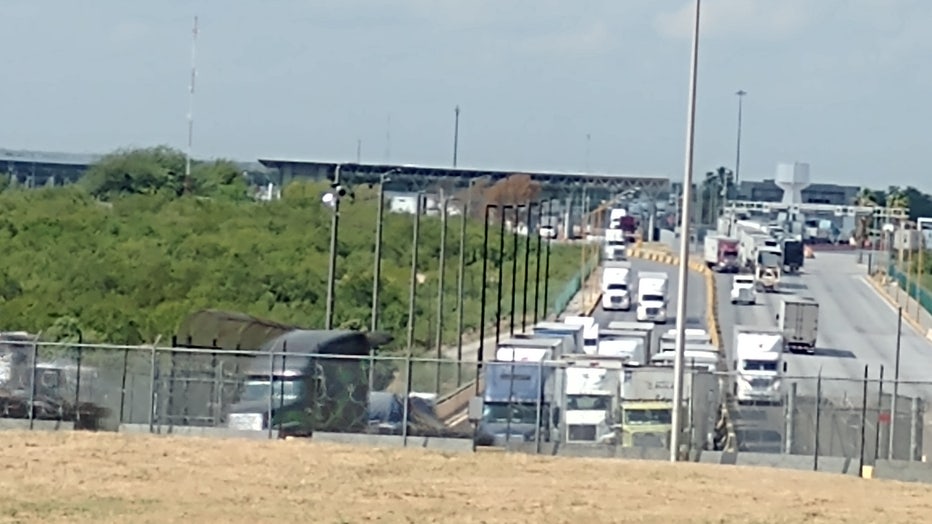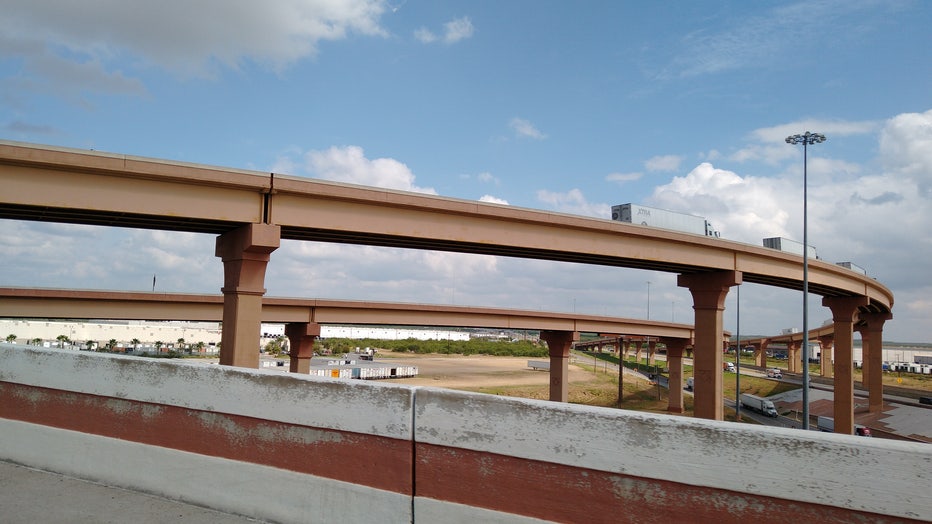CBP, Mexico take steps to speed up border trade at Laredo
LAREDO, Texas — More than two million northbound commercial trucks pass through the Laredo port of entry every year. Border Report wanted to learn why there are so many trucks and where they are coming from.
“All over Mexico,” says Javier Vasquez, assistant port director for trade operations in Laredo.
Each truck may bring in steel from Monterrey, automotive components put together in San Luis Potosi, pottery and copperwork from Michoacan and Jalisco. Each truck may also bring in any number of products assembled at the maquiladoras — foreign-owned assembly lines — in Nuevo Laredo, just across the border from Laredo, Texas.
“It’s basically anything that Walmart sells,” says the official from Customs and Border Protection (CBP), the agency in charge of ports of entry into the United States.

Trucks constantly and go between Mexico and the United States at the World Trade Bridge in Laredo, Texas. (Border Report Photo/Julian Resendiz)
The truck movement at the World Trade Bridge that spans the two Laredos is non-stop. It’s as if the same few thousand trucks were going around in circles, which they often actually do.
According to Vasquez, Laredo has traditionally been a huge transfer center, with Mexican carriers coming in, dropping off a load and going back to pick up another. That’s reflected on the port’s crossing stats, in which almost as many trucks go southbound every day as the number of those that enter the United States.
But whether the trucker is headed to a warehouse in Laredo and then back to Mexico to pick up another load or is ready to keep driving north to a U.S. destination, CBP and the Mexican government have taken steps recently to speed up commercial crossings.
Since 2017, CBP and Servicio de Administracion Tributaria (SAT), Mexico’s customs agency, have been jointly inspecting northbound cargo. Previously, each country conducted a separate inspection, which added unnecessary hours to traffic flow, Vasquez said.
In addition, U.S. officials allow SAT officers to look at X-rays taken of each trailer, which also cuts down on redundancies.

After being cleared for entry into the United States, trucks take a ramp leading to major highways. (photo by Julian Resendiz)
Vasquez said part two of the Unified Cargo Processing program involves railroad traffic. Laredo processes almost half of all the rail cars from Mexico into the United States. The change involves pre-clearance of the crews that man the cargo trains. Right now, crews have to change at the border.
“Now the trains can go directly to the Union Pacific or Kansas City railroad yards, so that’s another time savings for the importer,” he said.

